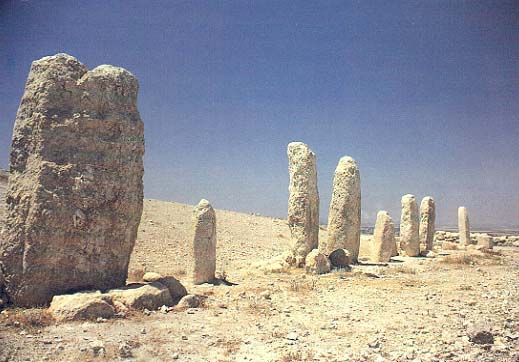
- ALTAR
'ɔl.tər noun. A table or block used as the focus for a religious ritual, particularly offerings or ritual sacrifices to a deity. - 2. In Christianity, the table used to hold the elements for holy communion.
- 3. In some churches, the stage, the steps to the stage, or the space in front of the stage, where people go as a sign of commitment.
Whenever humans ritually worship God, we usually need a table to put stuff on.
Might be the stuff we need for our rituals. Might be something we’re gonna give to God, or sacrifice for God. If there’s nothing else around—we just kinda did this on the spur of the moment—often humans will use the table itself as the ritual: “Hey God, I built you an altar!” and then we pray at the altar. Which is exactly what we Christians do whenever we use our churches’ various tables or raised platforms (or, y’know, actual altars for
Humanity instinctively just finds something profound about using a raised platform for God-stuff. It’s not solely practical.
When spur-of-the-moment altars get built, it’s usually because we wanna worship God so bad, we can’t wait to get to an existing altar. Or we figure we’re gonna worship God at that place, and frequently, so we may as well have a regular altar around. Sometimes it’s a memorial altar: God did something at that location, so let’s mark it with an altar, and people can use it to continue to worship him.
Among the ancients Hebrews, any flat-surfaced rock would do. But typically they did stuff to make the altar more obviously an altar, and not just some flat rock. Ancient middle eastern custom was simply to stand a rock upright: A rock lying flat on the ground was obviously a product of nature, but a rock standing upright for no good reason probably had some good reason: Somebody propped it up that way as a memorial or an altar. That was the idea when the Hebrews left 12 rocks near the place they first crossed the Jordan River into Palestine:
Joshua 4.8 KJV - And the children of Israel did so as Joshua commanded, and took up twelve stones out of the midst of Jordan, as the L
ORD spake unto Joshua, according to the number of the tribes of the children of Israel, and carried them over with them unto the place where they lodged, and laid them down there.- And the children of Israel did so as Joshua commanded, and took up twelve stones out of the midst of Jordan, as the L

Iron Age massebót, or standing stones, found in the middle east. Biblical Archaeology Review
“And laid them down” (Hebrew
Y’might notice lots of ancient cultures put up “standing stones” for exactly the same reason. Like the obelisks and steles of ancient Egypt, or the megaliths and menhirs and stone circles found all over the Celtic regions. Heck, I’ve known kids who like to stand rocks upright for fun, so it’s no surprise you’ll find ’em everywhere. But for the really big stones which take effort to put in place, we’re talking important reasons for it: Memorials and worship.







